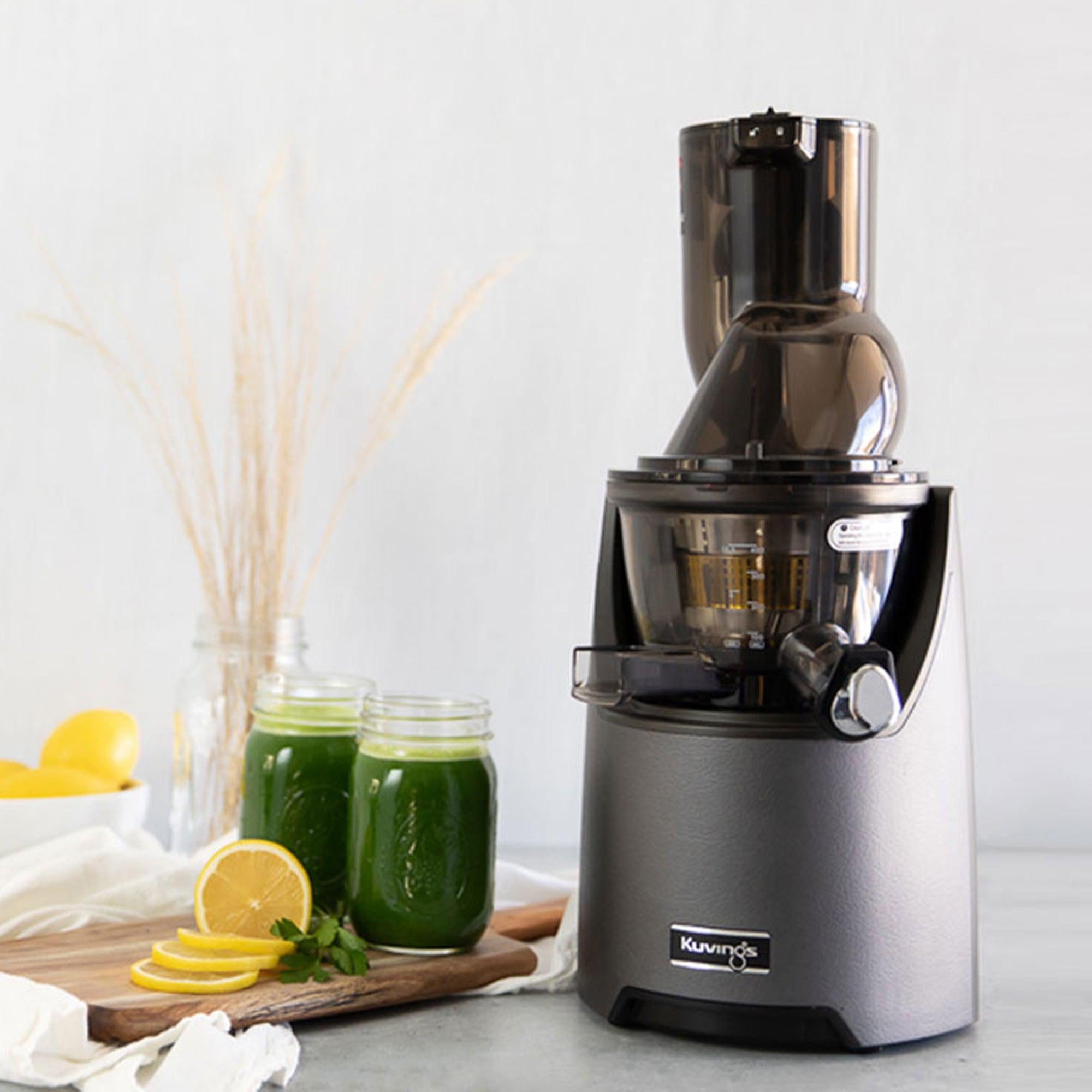Juicing soft fruits poses unique challenges due to their texture. Our team tested juicing soft fruits, specifically berries, grapes, mango, banana, and avocado, using our cutting-edge REVO830.
In this article, we share our discoveries, juicing tips, and non-juicing alternatives, ensuring you make the most of your soft fruits.
Juicing Berries
You might have wondered if the different berry varieties are suitable for juicing—well, the answer is a resounding yes!
Thanks to a test by @theallnaturalvegan, we discovered that strawberries, blueberries, blackberries, and raspberries can be juiced.
Since berries are small fruits and have more pulp than water content, a lot of berries are needed to produce a substantial yield, and the yield might be slightly thicker. But don't worry–juice still flows abundantly.
Juicing Grapes
The existence of grape juice owes itself to the ability to juice grapes! Soft yet bursting with high liquid content, grapes effortlessly lend themselves to the juicing process.
Preparing grape juice is easy—just gently pluck the grapes from their stems.
@juicingwithmaddy opts for juicing seeded grapes. Seeded grapes are easy to juice, as their soft seeds won't cause any harm to your trusty juicer.
Bid farewell to store-bought grape juices by crafting your very own at home.
Juicing Mango
Juicing mangoes can be challenging. Mangoes boast less liquid content, translating to a lower juice yield.
The key is to select the right ripeness—between firm and soft. As mangoes ripen, their texture softens, leading to a puree-like consistency when juiced.
To avoid this, opt for a semi-firm mango like the one shown by @theallnaturalvegan below. Unripe mangoes are green, so notice that the mango she uses has a mixture of green and red skin.
Juicing Banana
Juicing three bananas with their peels surprisingly yielded approximately half a cup of juice.
Intrigued by this revelation, we conducted follow-up tests to discover which part of the banana holds the juice. To our amazement, the juice wasn't hidden within the banana flesh as expected but resided within the banana peel!
While banana peels hold all the juice and are rich in antioxidants, magnesium, potassium, protein, Vitamin B6, and Vitamin B12, banana peel juice is extremely bitter. So, for the sake of taste, it’s better to juice the whole banana as we did in the video below.
However, the resulting banana juice presented unique and questionable visuals. Therefore, we leave the decision to you: Is juicing bananas worth it? Would you drink this banana juice?
Juicing Avocado
In the realm of soft fruits, avocado is the fruit that's best left not to juice. We juiced 1 ½ avocados with their skin and without their pits.
Even though avocados have a creamy flesh like bananas, there is no juice in avocado skin. Hence, no juice was produced, resulting in a puree similar to smooth guacamole.
Don't be discouraged, though! You can use avocado for other recipes discussed in the "Alternatives" section below.
Tips for Juicing Soft Fruits
The tips below are not exclusive to soft fruits and can be applied to all ingredients. However, you may notice a distinctive trait when juicing soft fruits—the dryness of the pulp.
Soft fruits produce pulp that is noticeably wet to the touch. This stems from the inherent challenge of extracting every last drop of liquid from softer ingredients.
Initially, the pulp will be wetter, but as the juicing process continues, the pulp will gradually become drier.
1. Juice soft fruits before they become too ripe
As we explored in the "mango" section, fruit ripeness plays a crucial role in juicing success.
The golden rule for juicing soft fruits applies to all ingredients: Opt for a semi-firm fruit for optimal results.
While this principle extends to all fruits, it holds particular significance for soft fruits, given their inherently tender nature.
2. Juice soft fruits with water-rich ingredients
When it comes to juicing, water-rich ingredients produce abundant yields and aid softer fruits during the juicing process.
Their high water content dilutes and thins out the textures of delicate fruits like berries, grapes, and mangoes. The result? A smoother flow through your juicer, without the dreaded risk of clogging.
Consider pairing your soft fruits with the hydrating delights of melons, cucumbers, and celery.
3. Juice soft fruits with hard ingredients
It's not just water-rich ingredients that hold the key to success—hard ingredients play a crucial role, too!
We highly recommend alternating between soft and hard ingredients because the latter act as a natural guide, pushing all the ingredients through the strainer's holes.
This seamless interplay between textures ensures a smooth and efficient juicing process, preventing any unwelcome clogs or slowdowns.
Try juicing your soft fruits with robust root vegetables like carrots and beets!
Alternatives
1. Make sorbets with the sorbet strainer
Whether your fruit is soft or firm, freezing it can transform it into a delightful, icy sorbet. All our Whole Slow Juicers come with a specialized sorbet strainer designed to simplify your sorbet-making journey.
For more information on how to use the sorbet strainer, click here.
2. Make smoothies with the smoothie strainer
Soft fruits are perfect for smoothies because their naturally tender consistency effortlessly blends into a creamy, thick texture.
For the ultimate smoothie-making experience, our Kuvings AUTO10 Plus, AUTO10, REVO830, and EVO820 come equipped with a specialized smoothie strainer, making the process a breeze. For C7000 and B6000 users, you can enhance your smoothie game with an additional smoothie strainer purchase.
3. Use a blender
Unlike juicing, blending doesn't separate the juice from the pulp. Rather, it combines all the delectable components of your ingredients.
Despite this distinction, you can still achieve a thin, juice-like texture by blending with a generous amount of liquid. Read more about blending here.
When it comes to the perfect blender, look no further than our CB1000. Its vacuuming capabilities leave any creation you make smoother, fresher, and longer-lasting.
____
REFERENCE:
https://www.webmd.com/diet/health-benefits-banana-peel
Image by Freepik

















